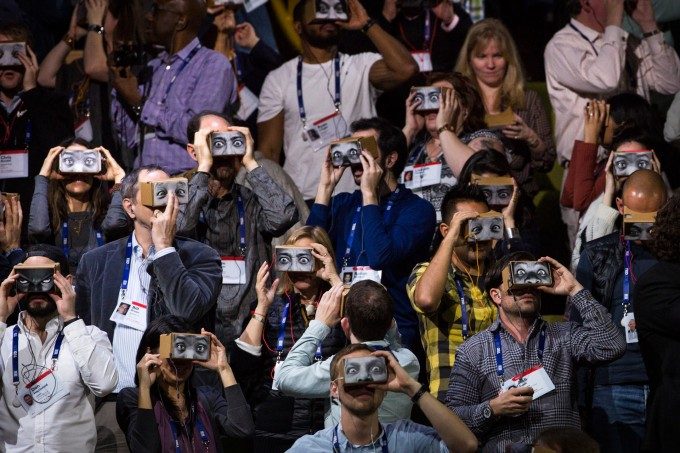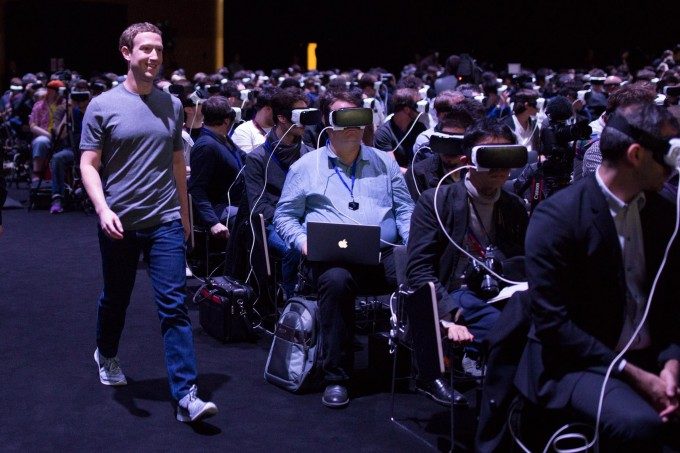2016 has already started off as an exciting year for smartphone-based VR. Google Cardboard and Samsung Gear VR have been around for a while now and are starting to get large marketing pushes from their creators. I still think we’re in the early stages of this technology and wanted to discuss where I think mobile VR is headed.


Amitt Mahajan is a founder and managing partner of Presence Capital, a virtual reality and augmented reality-focused venture fund based in the San Francisco. Previously, he was the CEO and co-founder of Toro (acquired by Google in 2015) and the CTO and co-founder of MyMiniLife (acquired by Zynga in 2009). While at Zynga, Amitt co-created and launched the game FarmVille and served as the CTO of Zynga Japan. Prior to his entrepreneurial work, he was a software engineer at Epic Games on the Unreal Engine, one of the main 3D platforms used for developing VR content.
1. Mobile VR Will Be the Most Widely Used Form of VR
Mobile VR holds a lot of potential because of its easy-of-use, low-cost, and portability. I firmly believe it’s going to be the dominant form of VR in terms of reach and engagement. It’s also likely to be the first VR experience for most people and the first thing that comes to mind when people think of VR.
Since most users already carry a powerful-enough phone around with them, they will just require a low-cost hardware that the phone plugs into to use the VR software functionality their phone already provides. The Google Cardboard is effectively free (with limitations) and the Gear VR is reasonably priced at $99, making both options an impulsive decision for consumers that already own a compatible phone ($500 normally). This is significantly cheaper than the Oculus Rift ($599) and HTC Vive ($799) and also does not have the added cost of a powerful PC ($1,000-$1,500). The Sony Playstation VR will likely be cheaper than the above options and requires a cheaper Playstation 4 ($350). Even with the lower-cost, mobile VR is still cheaper than any of the higher-end experiences.
The main delayer of adoption right now is the availability of hardware supported (e.g. Gear VR, not Google Cardboard) VR headsets for phones. The catalyst here will be a GearVR-like device for iPhones. Apple hasn’t entered this market yet but has already indicated that they are looking at the space.


2. The First Killer Use-case for Mobile VR Will Be on Planes and in Airports
Airline passengers already try to isolate themselves on flights and in the airport. Laptops, DVD players, and tablets are commonly seen in these contexts. Mobile VR offers an improved experience for passengers:
- A (virtual) screen that’s much larger than a tablet or seat back display and not as bulky as a laptop or large tablet. Users can be virtually sitting in their living room or a movie theater watching shows
- Isolation from other passengers. VR’s normally anti-social isolation works in the user’s favor in this context
- Uses your phone, so can connect to in-flight wifi for flights with bring-your-own-device technology (such as most United flights)
3. Major Mobile App Developers Will Build a VR-mode into Their Existing Mobile Apps Rather than Deploy a New VR-only App
Within a few years there will be multiple types and brands of mobile VR headsets. Given this, rather than create brand new apps for new stores, I predict most app developers will opt to instead include a VR mode within their existing mobile apps that are triggered once the phone has been inserted into a HMD. An example would be Hulu or Netflix entering VR Theater mode once the phone has been inserted into a VR headset like the Gear VR. This has several advantages:
- You can update your existing users to be VR-ready without getting them to download a new app
- Your existing push notification channels and permissions will persist
- It’s a better user experience for the end user because they only have a single app to open
- You maintain your chart ranking and search ranking in the App Store listings
4. The Biggest Producers of Mobile VR Games Won’t Be the Biggest Mobile Game Companies
Similar to how the largest mobile companies were not the largest social gaming companies, there’s enough of a DNA change from mobile to VR in terms of design and execution that new, VR-focused companies will emerge and see greater success. Small teams with a focus on experimentation and exploiting early platform advantages will win here over AAA / higher-production content.
The largest mobile games (Words with Friends, Angry Birds, HayDay, Candy Crush, etc.) were all started by mobile-first companies that iterated and experimented before they had a hit. It took several years after the iPhone was released before platform-defining titles were launched: Words with Friend/Angry Birds both launched 2 years after the iPhone and Candy Crush/HayDay launched 5 years after.
Since VR has unique design challenges, there will likely be an equivalent experimentation period before a big winner in mobile VR gaming appears.
5. Positional and, Eventually, Hand Tracking Will Come to Mobile VR
Positional tracking is not much of a prediction because it is already confirmed to be in development by Oculus CTO John Carmack.
See Also: Oculus CTO Affirms Positional Tracking Priority for Gear VR
Positional tracking for mobile VR is important because it allows developers to create a whole new class of experiences based on head movement. It’s similar to how after the iPhone added GPS support, a whole new set of apps based on mapping were made possible.
By that measure, hand tracking is even more interesting. When users have the ability to interact with a virtual world via their hands, an endless number of new applications will be made possible. Apps like Tilt Brush or DJ’ing in VR expand the possibility of VR. This tracking is also how mobile VR, combined with a cellphone’s camera, can eventually dovetail into mobile-based AR. Google’s Project Tango is attempting to do this. Hand tracking is a much more intuitive way of interacting with VR and goes a long way to help create presence for the user.
Leap Motion and other gesture tracking hardware are fairly compact and could be integrated into a mobile VR headset to enable this tech. No company has announced this officially yet but all signs point to it happening eventually.

